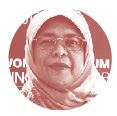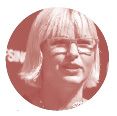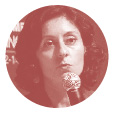Stories > Breaking Glass Ceilings
Breaking Glass Ceilings
ollectively, Asean is the world’s fifth largest economy, and is poised for greater growth in the coming decades. A 2018 study by McKinsey Global Institute says that by 2025, the region could boost its combined annual gross domestic product by US$370 billion – if they eliminated gender inequity.
Founded in 2005, the Women’s Forum connects women and men across the globe and opens cross-cultural dialogues on the most pressing issues of our generation, including gender inequality. The theme of the first forum that took place in Singapore last September was “Bridging Worlds for Inclusive Innovation”, with Madam Halimah Yacob, President of Singapore, as the keynote speaker. She will reprise the role at the upcoming iteration of the forum to be held in September 2019. Around 1,500 female trailblazers from over 50 countries will discuss and debate topics such as digital disruption in finance, climate change, education, urban innovation, and healthcare.
It will also focus on the role women play in effecting positive change within society. According to one of the speakers at the 2018 edition, PolicyPal Network CEO and founder Val Yap, women faced more challenges in the tech space, especially in leadership positions, securing funding, and encouraging more of their female counterparts to join them. Yap has developed a free app that enables users to organise and track all their insurance products on one dashboard in 2016, and made it onto Forbes Asia list of 30 under 30 in 2017. She encourages female entrepreneurs to take advantage of government support for start-ups such as the Monetary Authority of Singapore’s Fintech Regulatory Sandbox, which provides start-ups with a safe space to test new ideas, and optimise time and effort to raise funds. Grace Fu, Minister for Culture, Community and Youth, Singapore, stressed: “With women making up more than half of our population, we need to make a concerted effort so they can participate extensively in society.”
WOMEN IN WORKFORCE
Unlocking the potential The conversation led by influential female personalities in different sectors presented some vital points to ponder on.
 Madam Halimah Yacob, President of Singapore, on digital disruption:
Madam Halimah Yacob, President of Singapore, on digital disruption:
“Disruption has accelerated changes and challenges to the economy. By harnessing the power of network, data and infocomm technologies, we can improve lives, create economic opportunities and build a closer community. If we can combine the best of the global technology industry with the ingenuity and resourcefulness of women to solve the challenges posed by the digital divide, we can unlock a colossal wave of human potential and freedom for future generations.”
 Yolyn Ang, director, APAC Partnerships, Global Business Development, Google, on training women in Science, Technology, Engineering and Mathematics (STEM):
Yolyn Ang, director, APAC Partnerships, Global Business Development, Google, on training women in Science, Technology, Engineering and Mathematics (STEM):
“For implementation to be successful, it needs to be tailored to the local market. This is especially true in the Asia-Pacific, when all of our markets are unique and different from each other. We have a programme called Internet Saathi in India, where we have sent teachers into rural villages to train [women] not on technical topics, but allow them to use the Internet as a resource for practical things such as harvesting rice and at what price to sell their livestock.”
 Karoll Hindriks, CEO and co-founder of Jobbatical, on mobility:
Karoll Hindriks, CEO and co-founder of Jobbatical, on mobility:
“According to the International Organization for Migration, every seventh person on the planet is a migrant. The fastest growth in terms of migration has been among highly skilled females. By 2030, it is estimated that there will be a global talent shortage of 85 million people. Countries need to address issues such as how to build a good user experience [to attract talent]? What is the maternity and paternity leave [situation], how easy is immigration, what is the tolerance [for diversity]?”
 Lauren Sorkin, managing director, Asia Pacific, 100 Resilient Cities, on collaborations among governments, organisations and academia to effect change (citing the example of Da Nang, a coastal city in central Vietnam, where the community women were tasked with the rebuilding efforts following a spate of natural disasters):
Lauren Sorkin, managing director, Asia Pacific, 100 Resilient Cities, on collaborations among governments, organisations and academia to effect change (citing the example of Da Nang, a coastal city in central Vietnam, where the community women were tasked with the rebuilding efforts following a spate of natural disasters):
“Da Nang has experienced a dozen typhoons in about twice as many years. The [local] government collaborated with the Australian government to digitise their cadastral data to identify their most vulnerable households. But they didn’t just invest in fortifying houses; they asked the women’s organisation to manage the finance so that they may leverage the equity in those houses to start businesses. It is an ongoing programme with a revolving fund.”

from far left: Val Yap, CEO and founder PolicyPal; Sara Cheng, CEO, FujiXerox Singapore with Nida Januskis, associate dean, Insead; Zenaida C. Maglaya; undersecretary, Department of Trade and Industry, Philippines with Diaan Yi-Lin, senior partner, McKinsey & Company.
| Women’s participation on the boards of the top 100 primarylisted companies stands at 15.2%. | A survey in 36 countries across 10 sectors revealed that from 2014 to 2017, the number of females in executive level positions increased by 40%, and 38% of revenue-producing roles are held by women. | Among the 149 countries surveyed on gender parity, there is still a 32% gap that remains to be closed. |
| Diversity Action Committee, Singapore 2018 | Bloomberg Gender-Equality Index 2019 | World Economic Forum, The Global Gender Gap Report 2018 Women’s |
|
|
||
| In 2014, nearly three in 10 research scientists in Singapore were women, an increase of 5.5% since 2004. | Access to financial services such as bank accounts for women ranges from 32.3% in South and Southwest Asia to as high as 96.1% in certain countries of Southeast Asia. | Despite a 42% female workforce – higher than the global average of 39% – only 12% CEO and board-level positions in Southeast Asia are held by women. |
| Agency for Science, Technology and Research (A*Star), Singapore 2016 | Asian Development Bank-United Nations Women Report 2018 | The Boston Consulting Group’s Moving Toward Gender Diversity in Southeast Asia Report 2017 |
